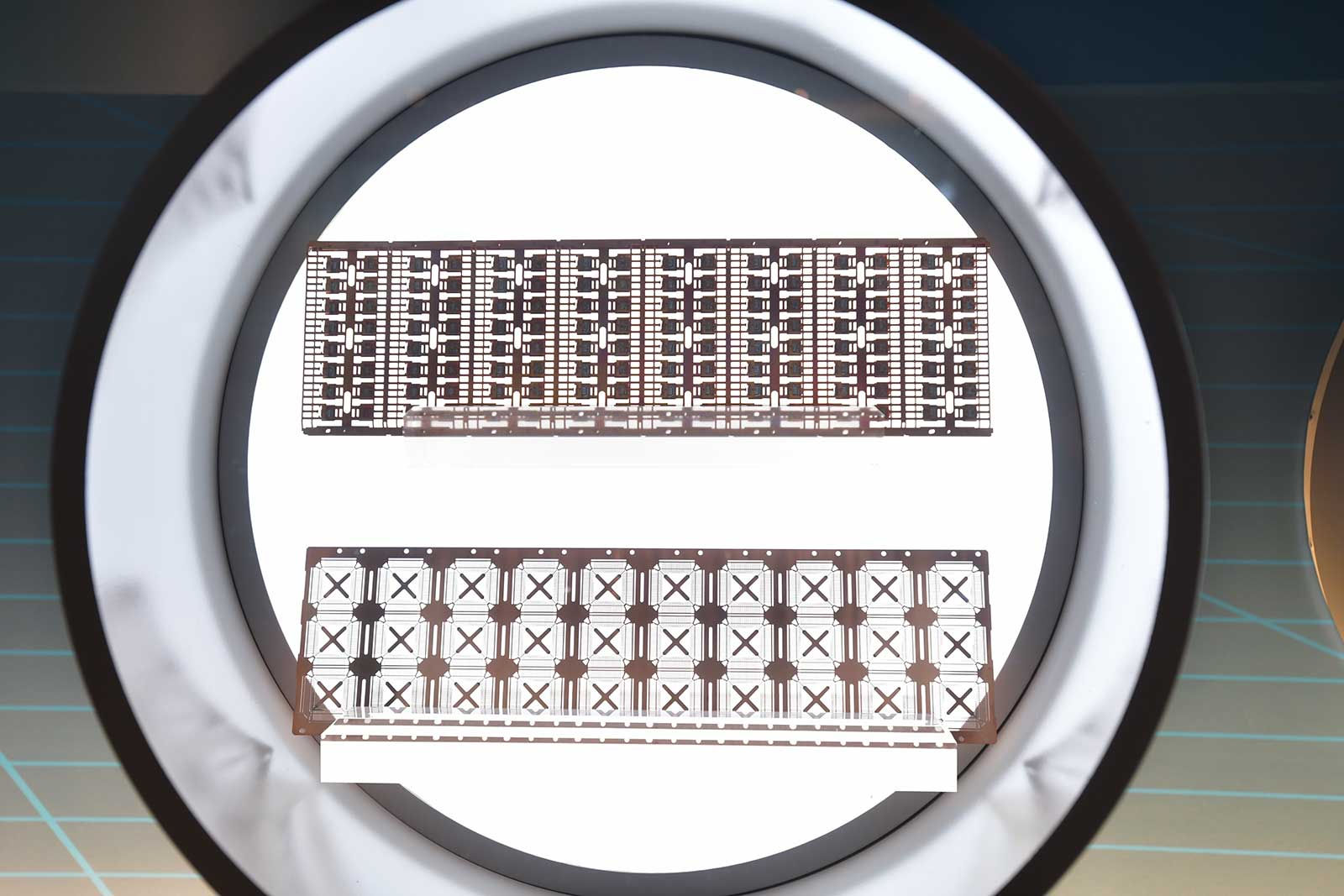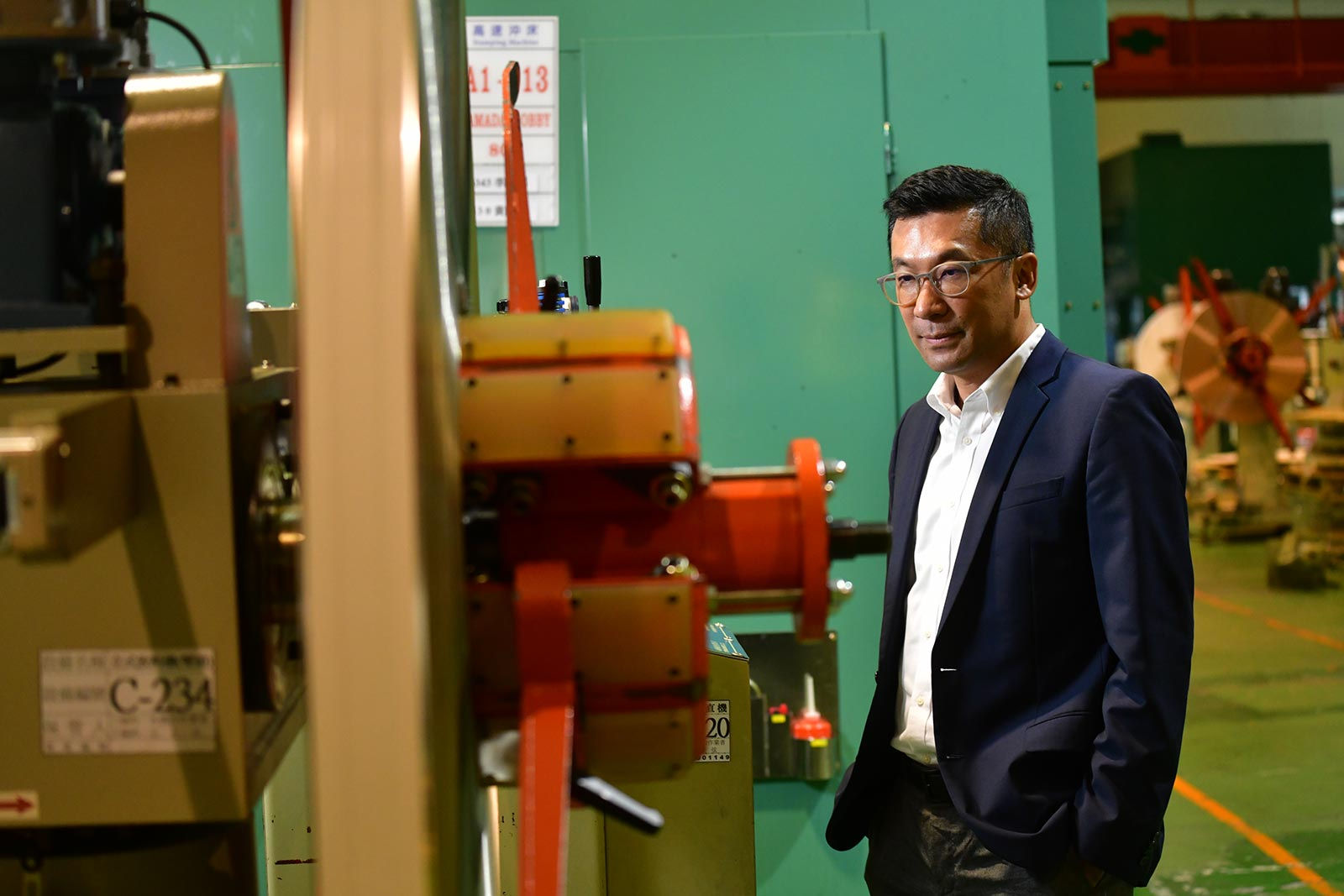How a Stapler Manufacturer Ended Up Creating Recharging Solutions for Tesla

Source:Kuo-Tai Liu
Changhua's SDI Corporation used to be known for office staplers. How did this 67-year-old company transform from making stationery to becoming a vendor for Tesla?
Views
How a Stapler Manufacturer Ended Up Creating Recharging Solutions for Tesla
By Ching Fang Wuweb only
The Changhua headquarters of SDI Corporation (順德工業) is just off Provincial Highway 14. Chen Wei-Te (陳維德), president of this former stationery giant, speaks about his newly purchased Tesla. Others may buy a Tesla because it’s in vogue or it’s good for the environment, but Chen is cut from different cloth.
"A Tesla has 1,200 lead frames inside. I made nearly half of them,” he says with a smile. “So I bought one to see how well they work.”
SDI has nearly 70 years of history. In the beginning, they were mostly known for their office supplies. But now, they are much more than a stationery giant, but a global leader in the power semiconductor lead frame market, with a market share of over 15%.
Where there is electricity, there are almost always power semiconductors. Lead frames are the metal structures that act as the medium between the chip and the printed circuit board.
One could find SDI lead frames not only in electric vehicles, but in everything from Dyson hair dryers, 5G base stations to equipment in the defense industry.
In recent years, electric cars have made up almost half of SDI’s semiconductor business. It is de facto part of the electric vehicle supply chain. Though the trade war last year shrank its revenue by 15%, SDI is still optimistic about the auto market. It has announced that it will invest $2.526 billion to build new smart factories in Nantou and Changhua.
Chen is standing in front of a decades-old two-story factory with faded stone walls. It will be part of SDI’s new investment, and is slated to become a brand new five-story plant. In the time of Chen’s grandfather Chen Shui-chin (陳水錦), this old place was filled with equipment that pumped out SDI’s famous office staplers, which were exported around the world.
From Staplers to EVs: the Secret is in the Bending
If you look inside an office stapler, everything from the staples to the trough to the metal bars are made from stamped metal. As to how to precisely design and make those stamps--therein lies the craftsmanship of these old factories. An error of just a millimeter will result in jammed staples and a broken stapler.
“Precision affects the durability and user experience of your stapler. So, we are very good at ‘bending’ these highly customized products.” Chen makes a gesture. “This is our heritage.”
In essence, the miniscule dents and gaps on the lead frame’s metal structure are also created by “bending.” The difference is, this requires the highest level of precision metal stamping technology. The degree of precision required is more than ten times that of producing staplers.

(Source: Kuo-Tai Liu)
Years ago, when Chen’s father J. S. Chen (陳朝雄) took over the business, he aimed to leverage their expertise in mold design, precision stamping, and electroplating that had been accumulated through years of producing stationery, and redirect it toward manufacturing lead frames. They began by selling to consumer electronics companies. In the end, they entered the supply chain of higher added-value industries, such as automotive and industrial manufacturing.
Consumer electronics products use a great deal of lead frames. Because the specifications are fixed, the added value is much lower. But it’s different with automotive and industrial manufacturing. Lead frames inside a car must withstand frequent vibrations while the vehicle is in motion, and drastic changes in internal temperature. The client’s requirements for precision, reliability, and conductivity are also much higher than what is required of the lead frames used in computers or appliances.
TrendForce analyst Wang Tsun-min (王尊民) notes that, as the size of power semiconductors sold to the automotive industry gets smaller, the structural design of lead frames needs to be adjusted accordingly. Though the lead frame industry has been around for a long time, Taiwan still beats China when it comes to customization. Therein lies its advantage.
In 2017, SDI was awarded best vendor by power semiconductor giant Infineon. “Do you know how much time has passed between my first visit to them and now, when they have awarded us ‘Best of the Best’? Fifteen years!”
 (Source: Kuo-Tai Liu)
(Source: Kuo-Tai Liu)
Fifteen Years is a Short Time to Enter the Automotive Supply Chain
In the automotive industry, quality takes time. You need to hunker down and play the long game. Self-driving cars are all the rage now, but SDI had already begun preparations a decade ago.
In 2009, a European customer asked for a special kind of lead frame. The proposed utilization rate was only three days a month, and they wanted a production line all to themselves. The raw material was expensive; the return on investment was abysmal. But Chen agreed on the spot, because the customer told him, “This is for autobrake systems.” Chen felt that producing autobrake components was tantamount to getting a foot in the door of the autonomous vehicle industry.
Experience in customization is the reason why Chen never shies away from tackling new specifications. “In the next five years, electric cars will become highly customized,” he says.
He takes out two lead frames that look almost identical. SDI sold them to STMicroelectronics; they were ultimately used in the power management systems of electric vehicles made by two different auto brands. The minute difference will be what determines which brand will come out on top. The lead frame is so minute that the degree of variation is finer than one tenth of a strand of hair. Yet the battery life of the electric vehicle hinges on it.
Advanced Driver Assistance Systems (ADAS) are becoming part of the standard package in every new car. Electricity courses through the entire vehicle, from the headlights to the rearview mirror. Like capillaries in the human body, power semiconductors and lead frames are everywhere. Chen brings up another example: SDI has co-developed a special kind of lead frame with a client that will be used in headlight sensors, so the lamps will make automatic adjustments as the vehicle moves.
“In the future, the entire car’s module will be all linked together.” According to Chen, once SDI’s products are certified, they will have a spot in the supply chain, and they will continue to invent new products alongside their automotive customers.
More than with conventional automobiles, vendors who sell to electric vehicle brands must interact directly with their clients. The reason: “Cars in the past may go for ten years without changing (its technology and specifications). But now, every year brings new specifications,” he says.

Chen came prepared for the interview; another special lead frame appears in his hand. This is one of the secret components that allow electric cars to recharge their batteries in an hour or less. It is a proprietary secret a major client has yet to make public.
This old plant on the side of a Provincial Highway has been through three generations. Now it is on the front line of the latest revolutionary electric vehicle technology.
Have you read?
♦ Taiwan’s Tesla Boom, and Looking for More
♦ How to Sell to Tesla? 40-year-old Company Sells to 60 Countries by Investing in SEO
♦ Gogoro’s EV Dream Facing Major Headwinds
Translated by Jack Chou
Edited by TC Lin
Uploaded by Penny Chiang






